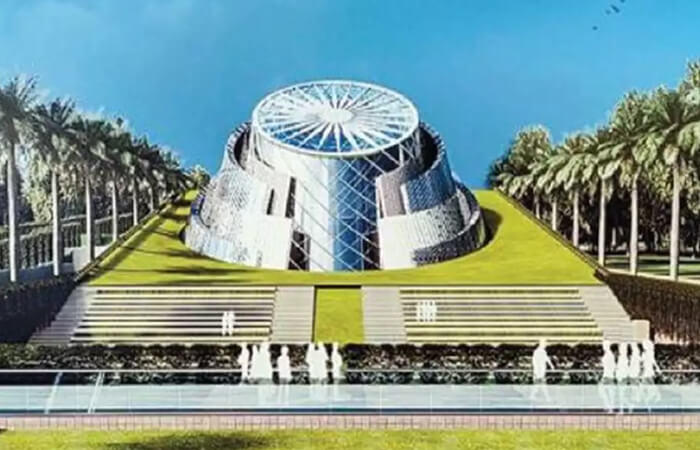Atmanirbhar Bharat Abhiyan – Self-reliant India Mission

India has faced the COVID-19 situation with fortitude and a spirit of self-reliance, which is evident in the fact that from zero production of Personal Protection Equipment (PPE) before March 2020, India today has created a capacity of producing 2 lakh PPE kits daily, which is also growing steadily. The Government of India is taking several steps to ensure that we are well prepared to face the challenges and threats posed by COVID-19. With the active support of citizens of India, we have been able to mitigate the spread of the virus so far.
Prime Minister remarked that the definition of self-reliance has undergone a change in the globalized world and clarified that when the country talks about self-reliance, it is different from being self-centered. He said that India’s culture considers the world as one family, and progress in India is part of, and also contributes to, progress in the whole world. He noted that the world trusts that India has a lot to contribute towards the development of the entire humanity.
Additionally, India has demonstrated how it rises up to challenges and uncovers opportunities therein, as manifested in the re-purposing of various automobile sector industries to collaborate in the making of life-saving ventilators. The clarion call given by the Hon’ble PM to use these trying times to become Atmanirbhar (self-reliant) has been very well received to enable the resurgence of the Indian economy. Unlock 1 Guidelines have been issued to enable resumption of economic activities while maintaining abundant caution thus allowing graded easing of restrictions.
The Five pillars of Atmanirbhar Bharat focus on:
- Economy – which brings in quantum jump and not incremental change. The government’s goal is to make India a USD 5 Tn economy by 2025.
- Infrastructure – which will become India’s new identity. To achieve the target of a USD 5 Tn economy, more than INR 100 lakh crore will be invested in infrastructure development in India over the next five years.
- System – based on 21st-century technology-driven arrangements.
- Vibrant Demography – which will prove to be a competitive advantage for a self-reliant India.
- Demand – utilized to its full capacity.
The Five phases of Atmanirbhar Bharat are:
Phase-I: Businesses including MSMEs
• Special economic and comprehensive package of Rs 20 lakh crores – equivalent to 10% of India’s GDP.
• Package to cater to various sections including cottage industry, MSMEs, laborers, middle class, industries, among others.
• Bold reforms across sectors will drive the country’s push towards self-reliance.
• It is time to become vocal for our local products and make them global.
Phase-II: Poor, including migrants and farmers
• 3 crore farmers with agricultural loans of Rs. 4.22 lakhs crore availed the benefit of 3 months loan moratorium.
• Interest Subvention and Prompt Repayment Incentive on crop loans, due from 1 st March, extended up to 31st May 2020.
• 25 lakh new Kisan Credit Cards sanctioned with a loan limit of Rs. 25,000 cr.
Phase-III: Agriculture
• Rs 30,000 crore Additional Emergency Working Capital for farmers through NABARD.
• NABARD will extend additional re-finance support of Rs 30,000 crore over and above the Rs 90,000 already being provided by NABARD for meeting crop loan requirements of Rural Cooperative Banks and RRBs.
• Will benefit 3 crore farmers, mostly small and marginal. Rs 2 lakh crore credit boost to 2.5 crore farmers under the Kisan Credit Card Scheme.
• A special drive to provide concessional credit to PM-KISAN beneficiaries through Kisan Credit Cards.
• Fisherman and Animal Husbandry Farmers will also be included in this drive.
• Will inject additional liquidity of Rs 2 lakh crore to 2.5 crore farmers.
Phase-IV: New Horizons of Growth
• Fast track Investment Clearance through the Empowered Group of Secretaries (EGoS).
• Project Development Cell in each Ministry to prepare investible projects, coordinate with investors and Central/
State Governments.
• Ranking of States on Investment Attractiveness to compete for new investments.
• Incentive schemes for Promotion of New Champion Sectors will be launched in sectors such as Solar PV manufacturing; Advanced cell battery storage; etc.
Phase-V: Government Reforms and Enablers
Reforming Governance for Ease of Doing Business
• Globally, potential investors look at a country’s Doing Business Report (DBR) ranking.
• Sustained measures taken have resulted in steadily improving India’s position in World Bank’s Doing Business Report ranks from 142 in 2014 to 63 in 2019.
• This included streamlining processes such as granting of permits and clearance, self-certification, and third party certification among others.
• Government is working on a mission mode on the next phase of Ease of Doing Business Reforms relating to easy registration of property, fast disposal of commercial disputes, and the simpler tax regime for making India one of the easiest places to do business.
Source: india.gov.in
Suggested Read: What is “Make in India” Initiative






